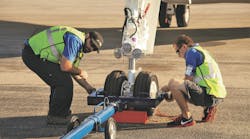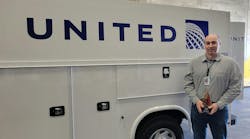You Have What It Takes to Become a Great Engineer!
By Amir Moghadam, Ph.D.
As a PhD in Aeronautical Engineering, I have worked in both academically-oriented universities and industry-oriented institutions teaching both aerospace engineering and engineering technology. In this article, we will take a look at some different types of engineering programs and why A&Ps should consider engineering as a viable career path.
Comparing programs
Engineering programs at the university level and at industry-oriented educational institutions differ greatly. Engineering technology courses offered at industry-oriented educational institutions offer a more hands-on approach than university engineering courses that take a strictly theoretical stance.
The term engineering technology distinguishes applied engineering programs from typical engineering curricula that are more theoretical. Engineering technology programs prepare graduates for employment across the technological spectrum especially in areas that deal with application, manufacturing, implementation, product improvement,
operation, and maintenance.
University level engineering courses leave
students with extensive knowledge in science, mathematics, and theory, but without a good practical knowledge of the field. Universities train engineering scientists - not engineers.
In one specific university level engineering program students are required to take three consecutive courses in aerodynamics. These courses focus on theory and math. In the Northrop Rice Aviation
Institute of Technology (NRAIT) engineering technology program students only take one course in applied aerodynamics which covers the same basic content as the three engineering courses, but with less emphasis on theory and mathematical formulations. Applied aerodynamics focuses more on the practical aspects of aerodynamics as related to the operation and performance of aircraft.
The NRAIT engineering technology program requires the completion of the A&P program as part of the degree requirements. Therefore, the students have already obtained a good practical understanding of aviation technology through their A&P studies. This hands-on experience gives them a terrific advantage in the study of engineering. They are able to relate theory to practice and have a much higher level of understanding
of the topics discussed. They ask more challenging questions and relate to actual applications of the theoretical principles.
What it takes
A&Ps have what it takes to become great
engineers. A good engineer should have both analytical and hands-on skills. It's relatively easy to train a technician to become a good engineer - you can teach basic analytical skills to hands-on technicians, but it is difficult to teach hands-on skills to the theoretically minded engineer. The world needs many more practical engineers than theoretical engineers. Imagine, for example, the number of engineers needed to conceptually design an aircraft vs. the number of engineers needed to manufacture, test, certify, maintain, and overhaul the aircraft.
The schools
NRAIT offers a bachelor's of science degree in Aircraft Maintenance Engineering Technology (B.S. AMET) designed specifically as a continuing education program for A&Ps. NRAIT awarded its first B.S. AMET degree in 1958 and has continuously improved the program to meet the changing needs of the global aviation industry. NRAIT awards academic credit for the A&P certificate. Check out NRAIT's web site for further information.
Another great program that prepares A&Ps for engineering positions is the Aircraft Maintenance Engineering program at Parks College (St. Louis University). Information about this program is available at www.slu.edu/colleges/parks.
There are many other continuing education programs that provide you with the opportunity to earn a bachelor's degree using your A&P as a foundation. However, the degree programs at NRAIT and Parks provide the added benefits of preparing you for an engineering career - allowing you to explore this exciting career track.
Career paths
As an engineer, you can work for airline
engineering departments, aircraft manufacturing companies, engine manufacturing companies, systems/components manufacturing companies, MROs, completion/modification facilities, and governmental organizations. You can also seek practical engineering positions in other industries. The combination of basic maintenance and engineering knowledge and a commitment to quality and safety are in high demand in almost any technological industry.
Obtaining an engineering technology education does not necessary mean that you have to choose an engineering career. You can continue to work as a technician - but with a better understanding of the underlying physical principles and the ability to communicate more effectively with the engineering personnel. You will be a more informed and knowledgeable technician.
Many A&Ps who have chosen to become engineers have been very successful. You really do have what it takes to become a great engineer. All you need is focus and determination. You can do it.
Dr. Amir Moghandam received a PhD in aeronautical engineering from Cambridge University. He has held teaching positions at the University of California (Santa Barbara and Irvin) and NRIAT. Amir currently acts as the CEO/president of both NRAIT and Aerolearn.
Additional ReSources
Northrop Rice Aviation
Institute of Technology
1155 W. Arbor Vitae St.
Suite 115
Inglewood, CA 90301
(310) 568-8541
www.nrait.edu
Parks College
3450 Lindell Blvd.
P.O. Box 56907
St. Louis, MO 63156
(314) 977-8203
www.slu.edu/parks




